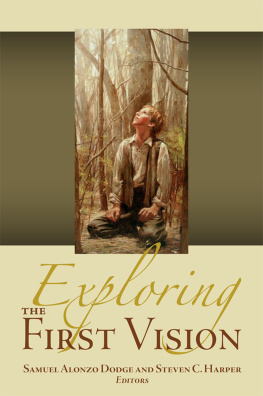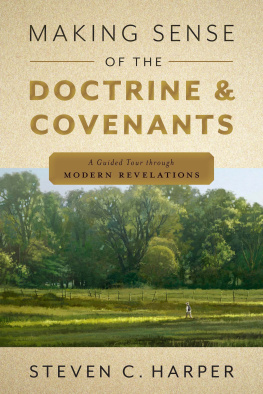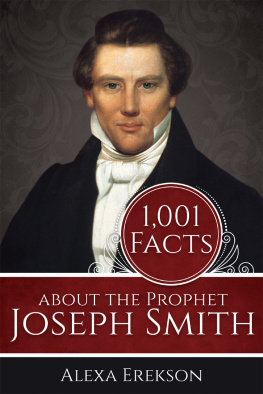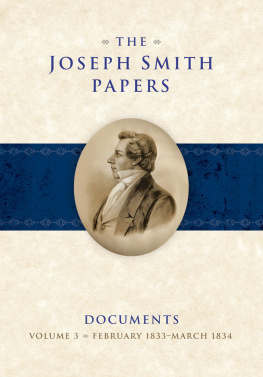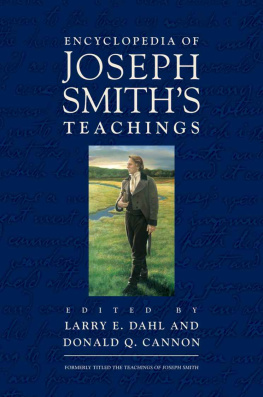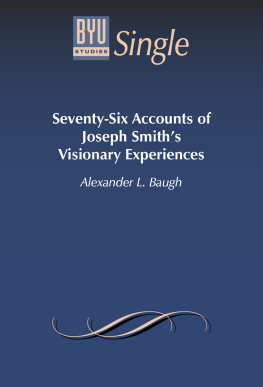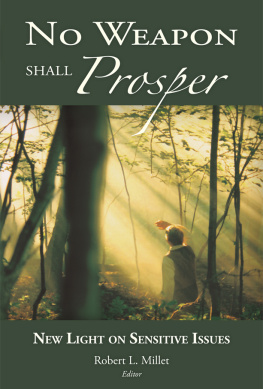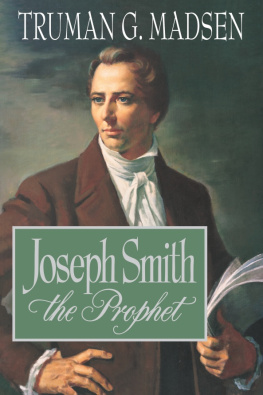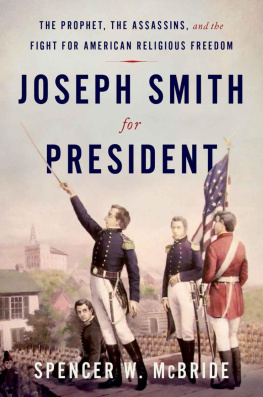2012 Steven C. Harper.
All rights reserved. No part of this book may be reproduced in any form or by any means without permission in writing from the publisher, Deseret Book Company, P.O. Box 30178, Salt Lake City Utah 84130. This work is not an official publication of The Church of Jesus Christ of Latter-day Saints. The views expressed herein are the responsibility of the author and do not necessarily represent the position of the Church or of Deseret Book. Deseret Book is a registered trademark of Deseret Book Company.
2012 Steven Craig Harper
All rights reserved. No part of this book may be reproduced in any form or by any means without permission in writing from the publisher, Deseret Book Company, P.O. Box 30178, Salt Lake City, Utah 84130. This work is not an official publication of The Church of Jesus Christ of Latter-day Saints. The views expressed herein are the responsibility of the author and do not necessarily represent the position of the Church or of Deseret Book Company.
Deseret Book is a registered trademark of Deseret Book Company.
Visit us at DeseretBook.com
Library of Congress Cataloging-in-Publication Data
Harper, Steven Craig, 1970 author.
Joseph Smiths First Vision : a guide to the historical accounts / Steven C. Harper.
pages cm
Includes bibliographical references and index.
ISBN 978-1-60907-154-7 (hardbound : alk. paper)
1. Smith, Joseph, 18051844First Vision. 2. The Church of Jesus Christ of Latter-day SaintsHistory19th century. 3. The Church of Jesus Christ of Latter-day SaintsDoctrines. 4. Mormon ChurchHistory19th century. 5. Mormon ChurchDoctrines. 6. New York (State)Church history19th century. I. Title.
BX8695.S6H28 2012
289.3092dc232012033595
Printed in the United States of America
Publishers Printing, Salt Lake City, UT
10 9 8 7 6 5 4 3 2 1
For Elder Marlin K. Jensen,
Church Historian, disciple of Christ,
and for the rising generations
(D&C 69:8)
Introduction
I once listened to a presentation by several highly regarded historians. They had been asked if they could witness any single event in American history, which they would choose and why. Some of the answers were profound. One scholar thought of Columbus on the morning of discovery. Another said the closed debates of the Constitutional Convention. Other answers struck me as silly or insignificant.
No one asked me, but I knew from the moment I heard the question what my answer would be. I would be present for Joseph Smiths vision in the woods of western New York. A later Church president, Joseph F. Smith, regarded it as the most significant historical event since the Saviors resurrection.
No wonder it is hotly contested. On the one hand, Joseph Smiths first vision may be the best-documented theophanyvision of Godin history. Joseph Smiths papers include four or five different accounts (depending on how one decides to identify them). Most of these were later copied at least once. There are also a few contemporary secondary accounts in the papers of people who heard him tell of it. On the other hand, critics contend that the multiple accounts are inconsistent with each other or with historical facts and see in them an evolving story that Joseph embellished over time. The very same evidence sustains a more faithful view. The multiple accounts and the historical facts do not compel one to disbelieve Joseph. Some, in fact, find the richly documented vision a compelling reason to believe him.
It is the potential power of Josephs claims that makes them controversial. Historians get worked up in debates about the origins of revolutions or civil wars, but none of that compares to what is at stake with Josephs vision. In this case the maxim rings true: Josephs vision is not a matter of life or death; its much more important than that. This book, therefore, takes the vision seriously. It considers all the known evidence that originated with Joseph Smith, the only witness to the event, and it does so in a particular way. It is not a doubting book but neither is it a defensive or a dogmatic one. It seeks truth by study and by faith (D&C 88:118), and it is written for a particular group of readers, namely inquirers, seekers after truth.
Notes
Chapter 1
Seeking, Assuming, and Knowing
In philosophical terms, Joseph Smiths first vision is epistemological. Epistemology is the philosophy of knowing. It seeks answers to such questions as: What is knowledge? What do I know? How do I know? Josephs vision is about knowing. How to act I did not know, he said about his pre-vision self. But after the vision he knew. I had seen a vision, I knew it, and I knew that God knew it (1838 account; see chapter 4).
This book is also epistemological. It asks, What can be known of Josephs experience and how? It seeks answers based on the historical method and on spiritual experience. We who seek to know the veracity of Josephs testimony can know only through Joseph. He was the only witness. He created the evidence we have to evaluate. When studying the vision, it is best to seek learning by faithfully studying Josephs accounts. It is worst to assume what his experience must have been like and how he would respond to it. But thats exactly what many people do, including many who believe in Josephs vision. They create hypothetical history that is easily disproved. For example, without ever analyzing the evidence closely, some assume that if a teenage boy saw God and Christ, he would obviously tell his family right away. Certainly he would remember the date of the event and his precise age at the time. Undoubtedly he would write down the experience immediately. And surely he would relate it the same way every time he told it. Yet not one of those assumptions is supported by the historical recordthe accounts that come to us from Joseph.
Joseph Smiths epistemologythe seeking way of knowing he described and enacted in the grovecan be our way of knowing. In other words, if we seek as Joseph did, we can come to know what he knew as he knew it. Probably the best known statement of this seeking way of knowing is Moroni 10:35 in the Book of Mormon. We sometimes hear this passage summed up as just pray about it, but those four words are hardly an adequate summary of the scriptures more than one hundred carefully chosen words. Rather, Moroni enjoins his readers to act in specific ways and to act upon the testimonies captured in and communicated by the Book of Mormon. These two ingredientsthe testimony itself and our ability to independently test its veracityare essential to this epistemological recipe. We must have the testimony in order to verify it. But simply knowing about a testimony is not the same as knowing whether it is true. Thus, Moroni invites those who read the testimony to remember and to ponder it. This is a call for brainwork: reading, remembering, ponderingall with real intent, or focused purpose. To this, Moroni continues, add spiritual longings and capacities: faith, sincerity, prayer to God in the name of Jesus Christ. When the seeker invests all of the required elementsintellectual and spiritualthe promise is that by the power of the Holy Ghost ye may know the truth of all things (Moroni 10:5).
An early Latter-day Saint newspaper article explained this way of knowing: Search the revelations which we publish, and ask your heavenly Father, in the name of his Son Jesus Christ, to manifest the truth unto you, and if you do it with an eye single to his glory, nothing doubting, he will answer you by the power of his Holy Spirit: You will then know for yourselves and not for another: You will not then be dependent on man for the knowledge of God.


